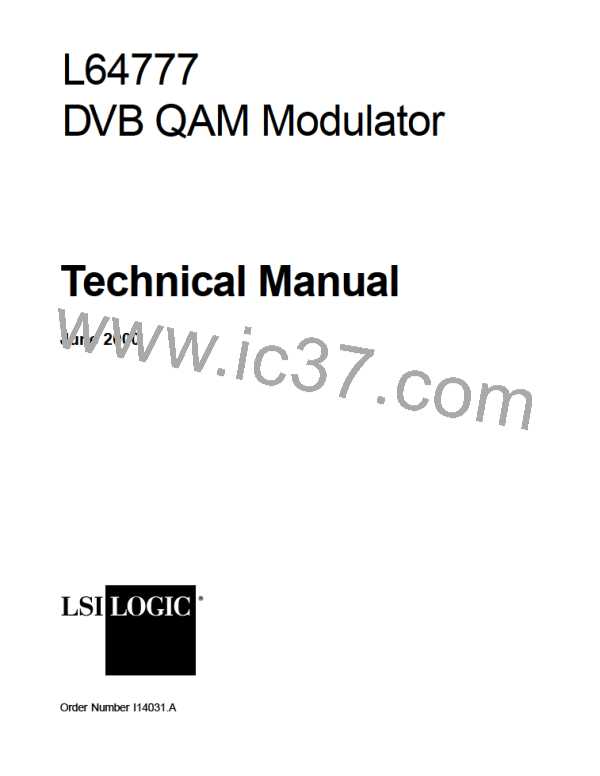2.10 Differential Encoder and QAM Mapping
This block performs differential encoding and mapping for 16 and 64
QAM, as specified in the Digital Broadcasting Systems for Television
Sound and Data Services: Framing Structure, Channel Coding and
Modulation Cable Systems, the baseline document, and its extensions.
The QAM 256 mapping is taken from the DVB document 1190.
The encoder performs differential encoding on the two most significant
bits of each symbol, as shown in the block diagram in Figure 2.18 and
specified in equations 2.1 and 2.2.
Figure 2.18 Differential Encoder and QAM Mapping
I[3:0]
MSB = A
I
k
k
Differential
Encoder
Q
MSB − 1
k
8
Byte to
M-tuple
B
Mapping
k
From
Interleaver
m − 2
Q[3:0]
LSB
To clarify the underlying concepts in Figure 2.18, here are two examples:
1. If m = 4, A is bit 3, B is bit 2, and the LSB = (m − 2) bits = bits [1:0].
k
k
2. If m = 6, A is bit 5, B is bit 4, and the LSB = (m − 2) bits = bits [3:0].
k
k
Equation 2.1
Equation 2.2
Ik = (¬(Ak Bk ))(Ak
I
k – 1) + (Ak Bk )(Ak Qk – 1
)
Qk = (¬(Ak Bk ))(Bk
Q
k – 1) + (Ak Bk )(Bk Ik – 1)
Mapping performs a table look-up for the concatenation of the (m − 2)
least significant bits of each symbol with the differentially generated bits
I and Q .
k
k
In 64 QAM mode, the mapping block of the differential encoder maps the
6-tuples to two 3-bit values for I and Q output. In 16 QAM mode, it maps
the 4-tuples to two 2-bit values. For lower QAM modes, it aligns the I and
Q output values to the MSB and stuffs the least-significant bit (LSB) with
ones.
2-26
Modulator Architecture

 ETC [ ETC ]
ETC [ ETC ]